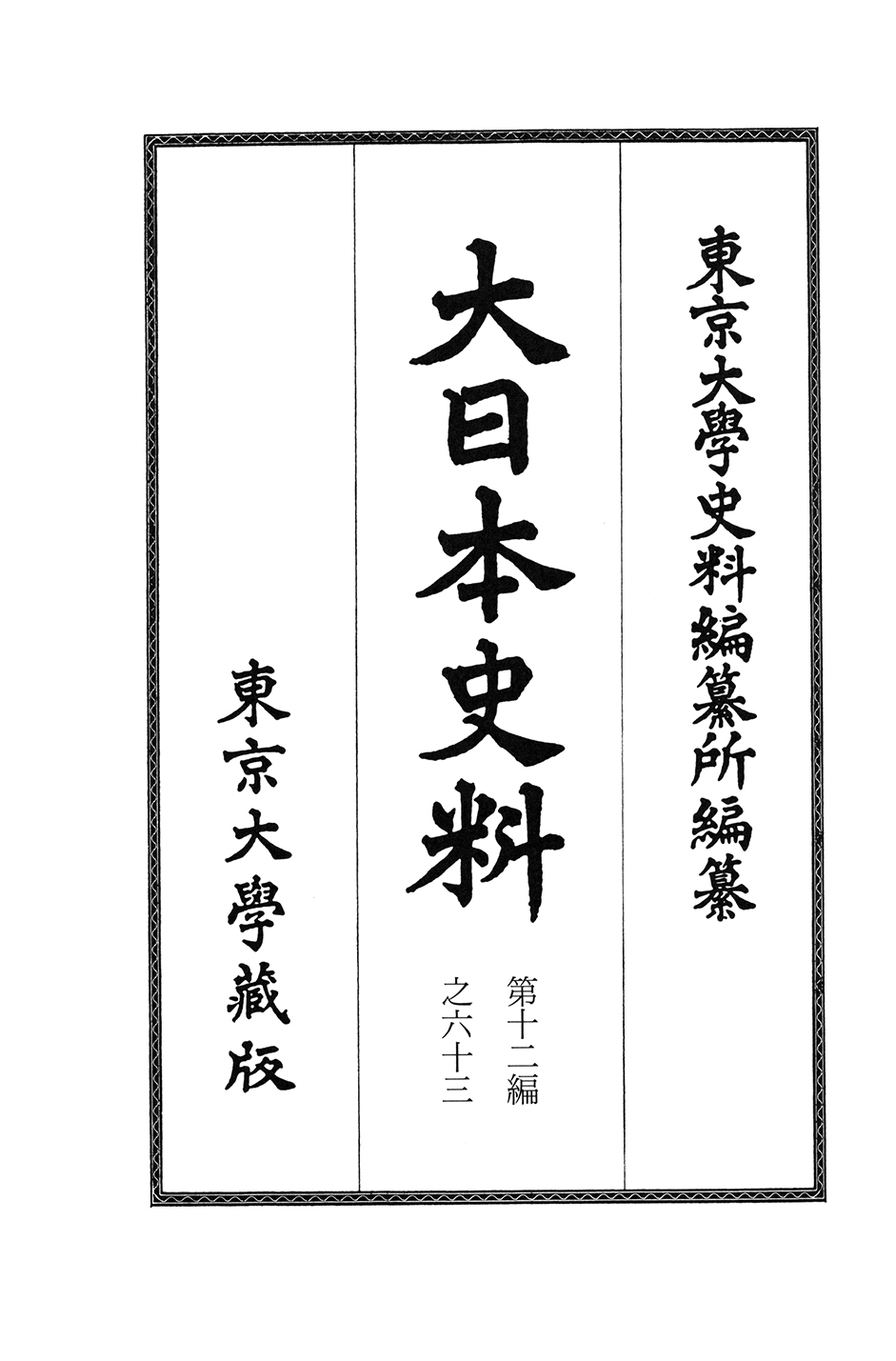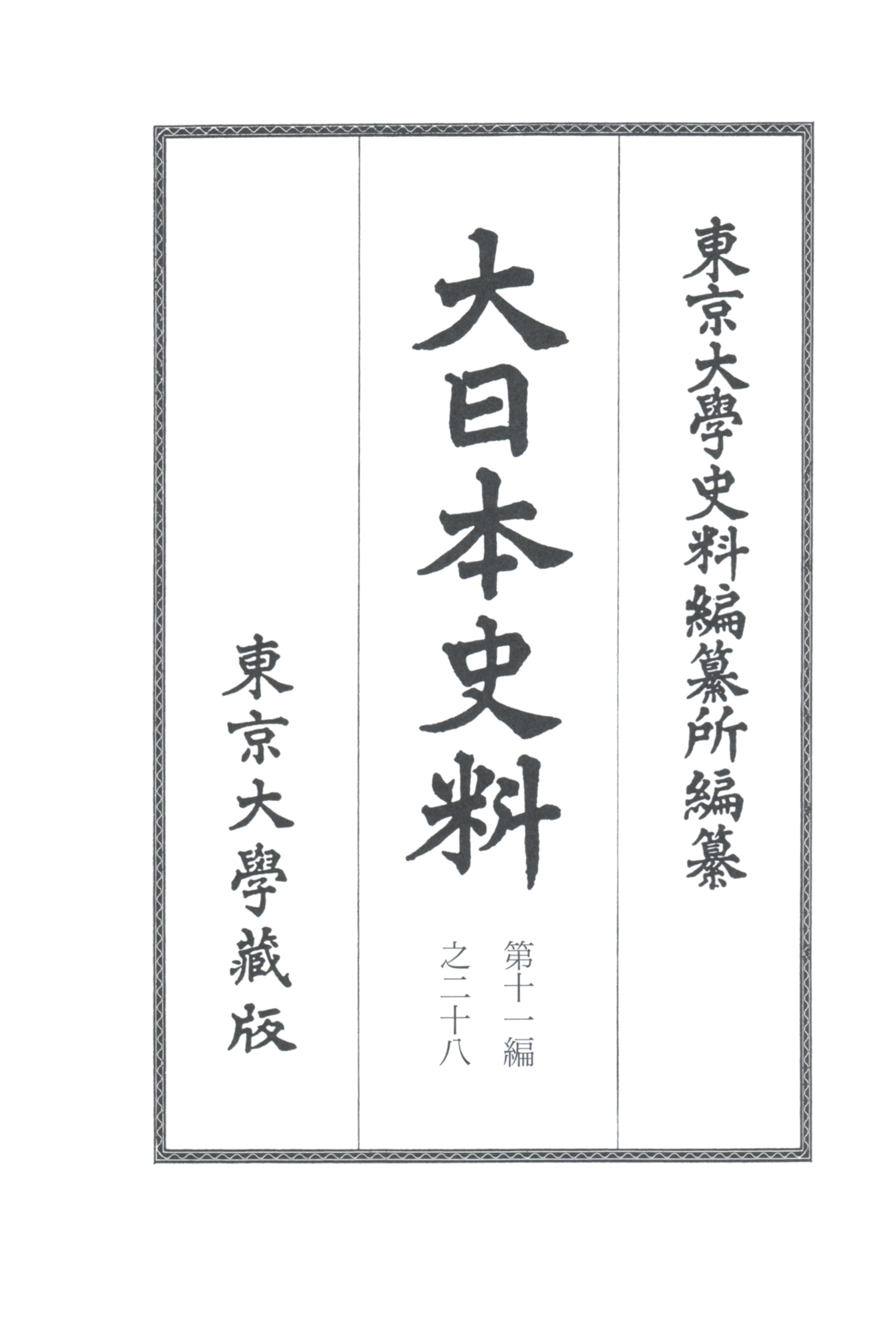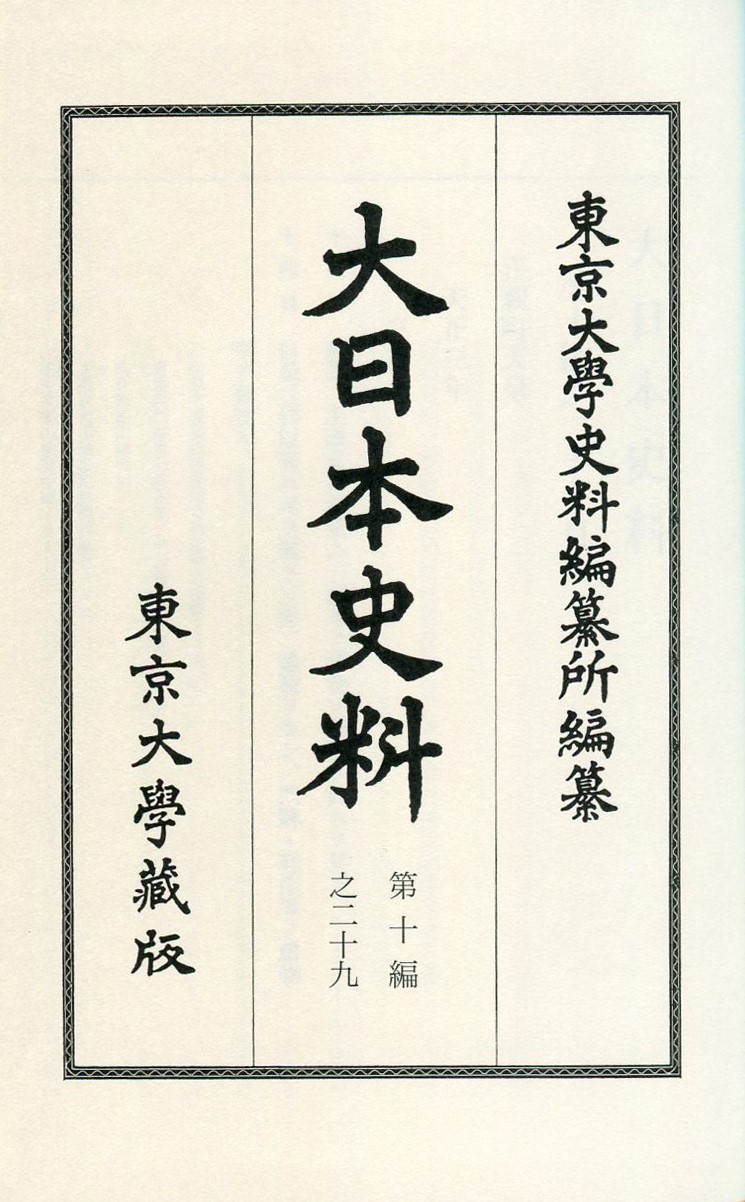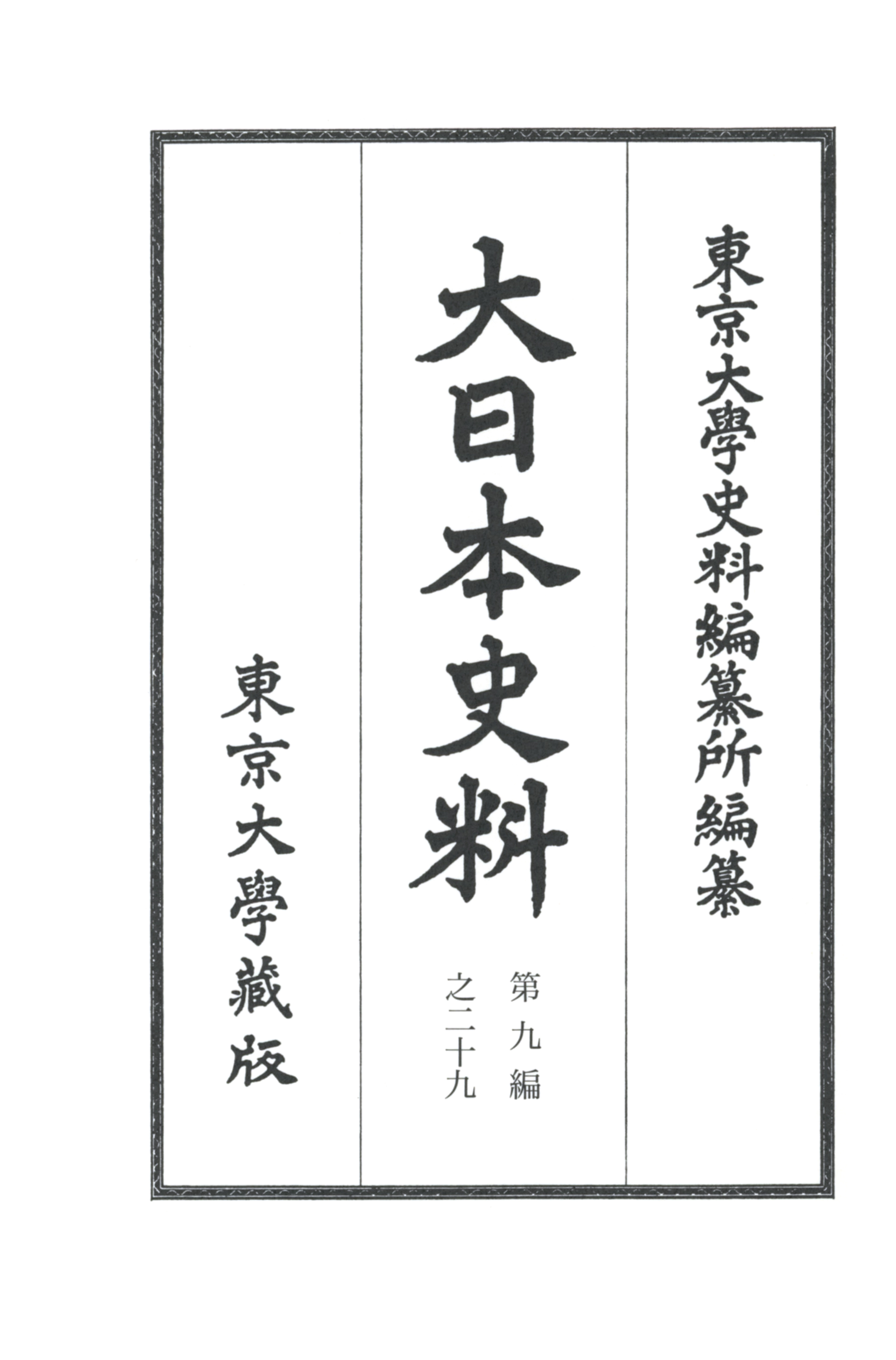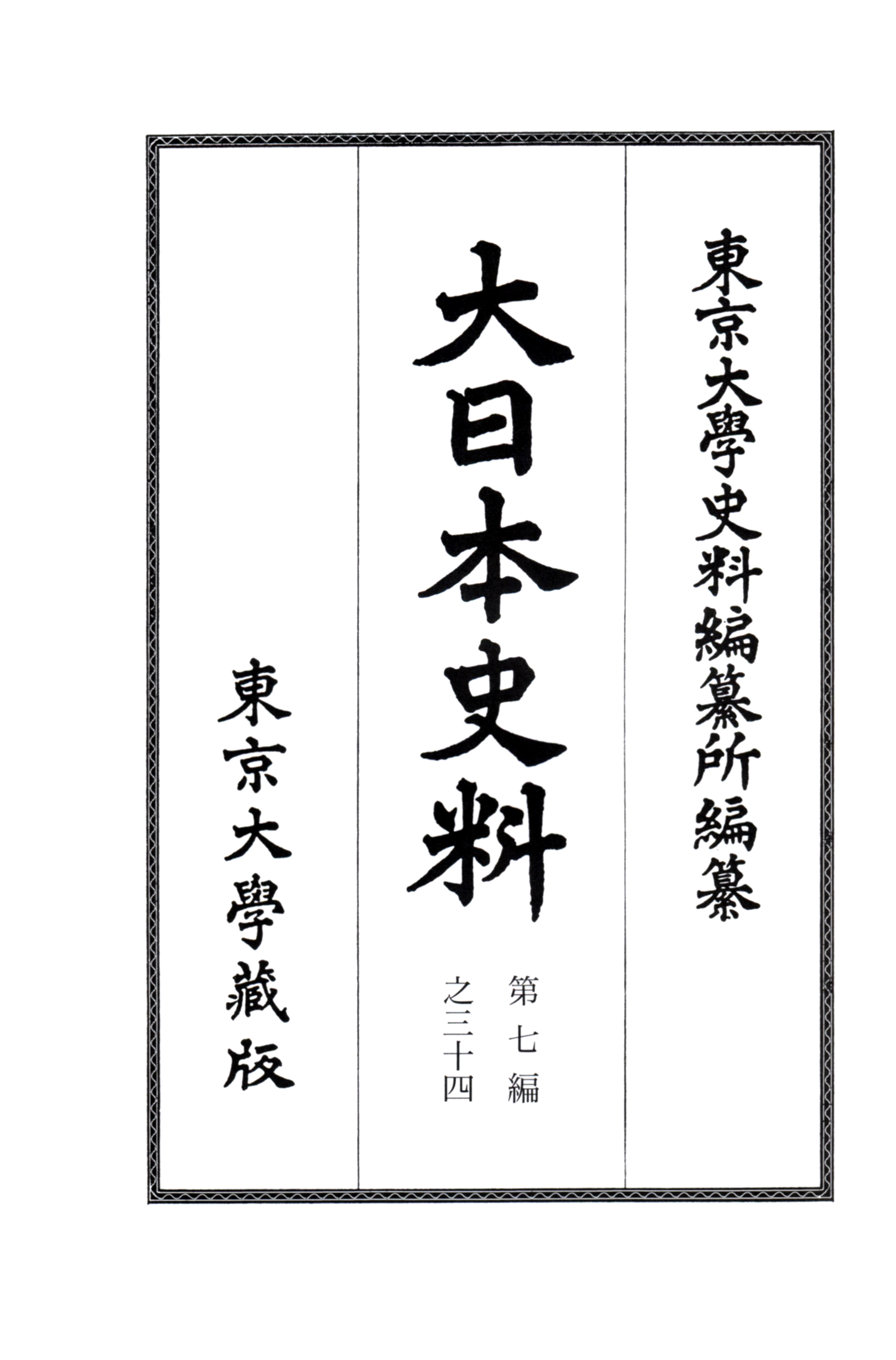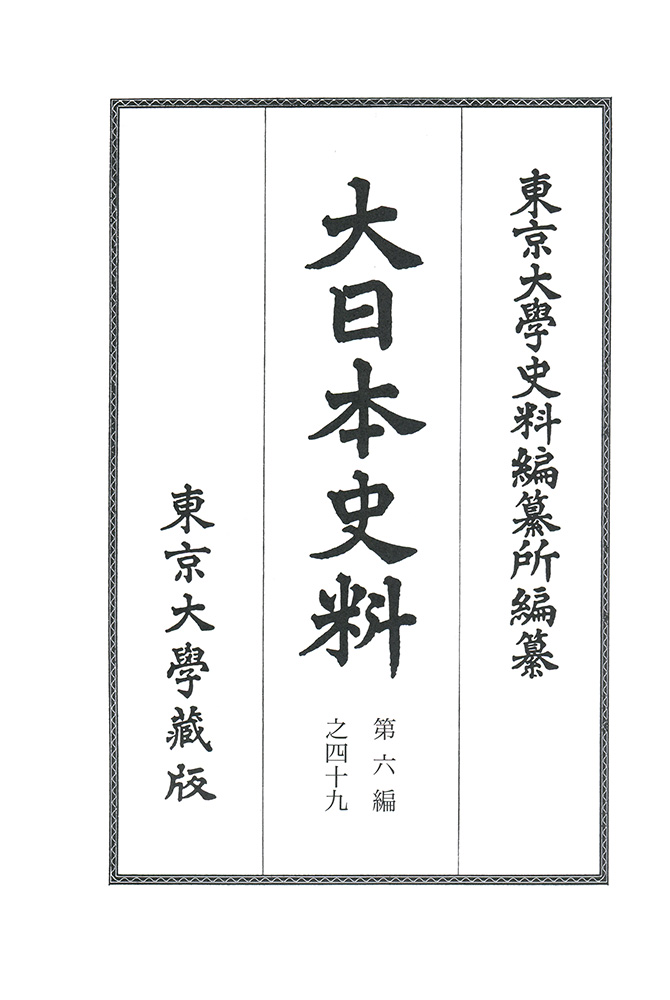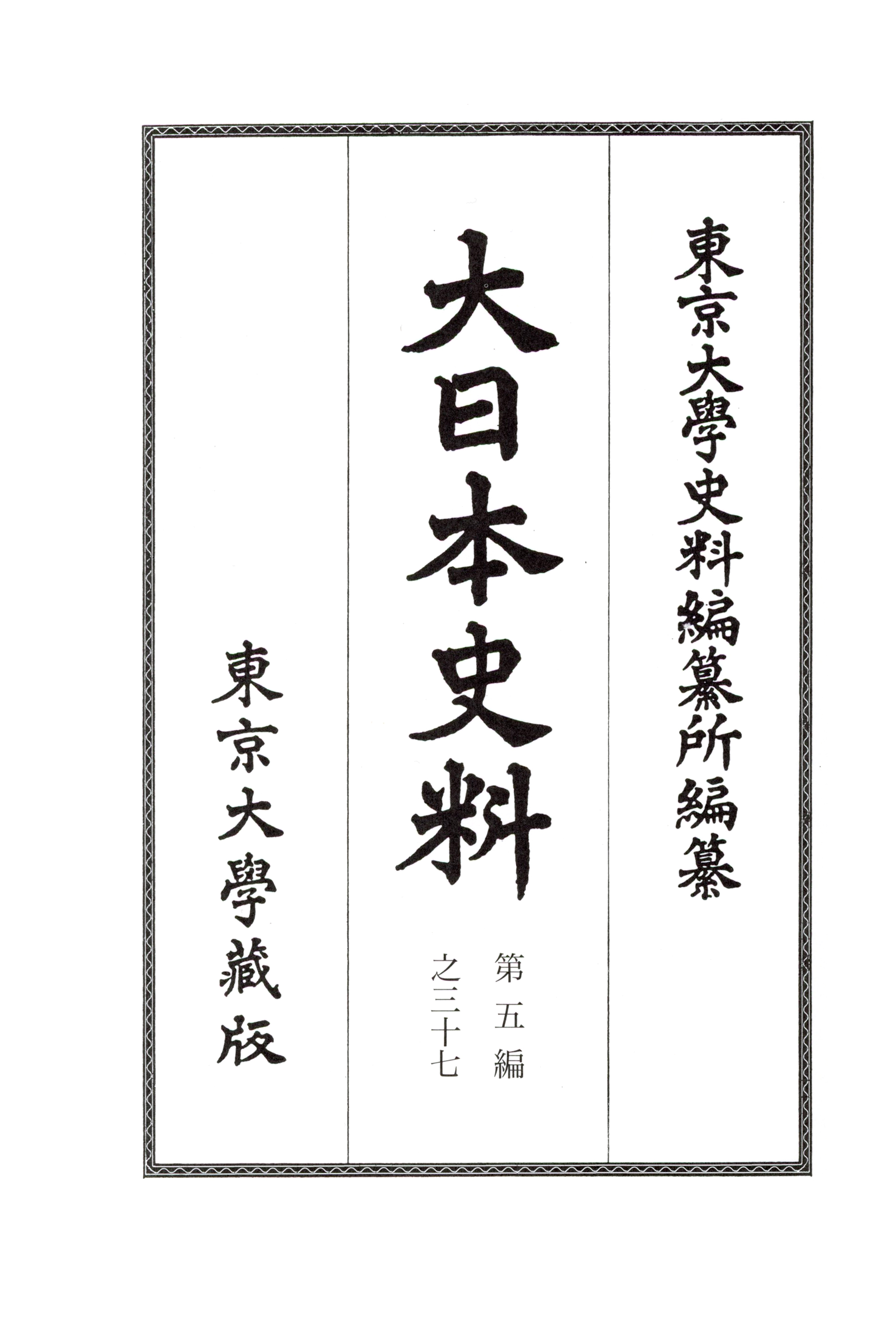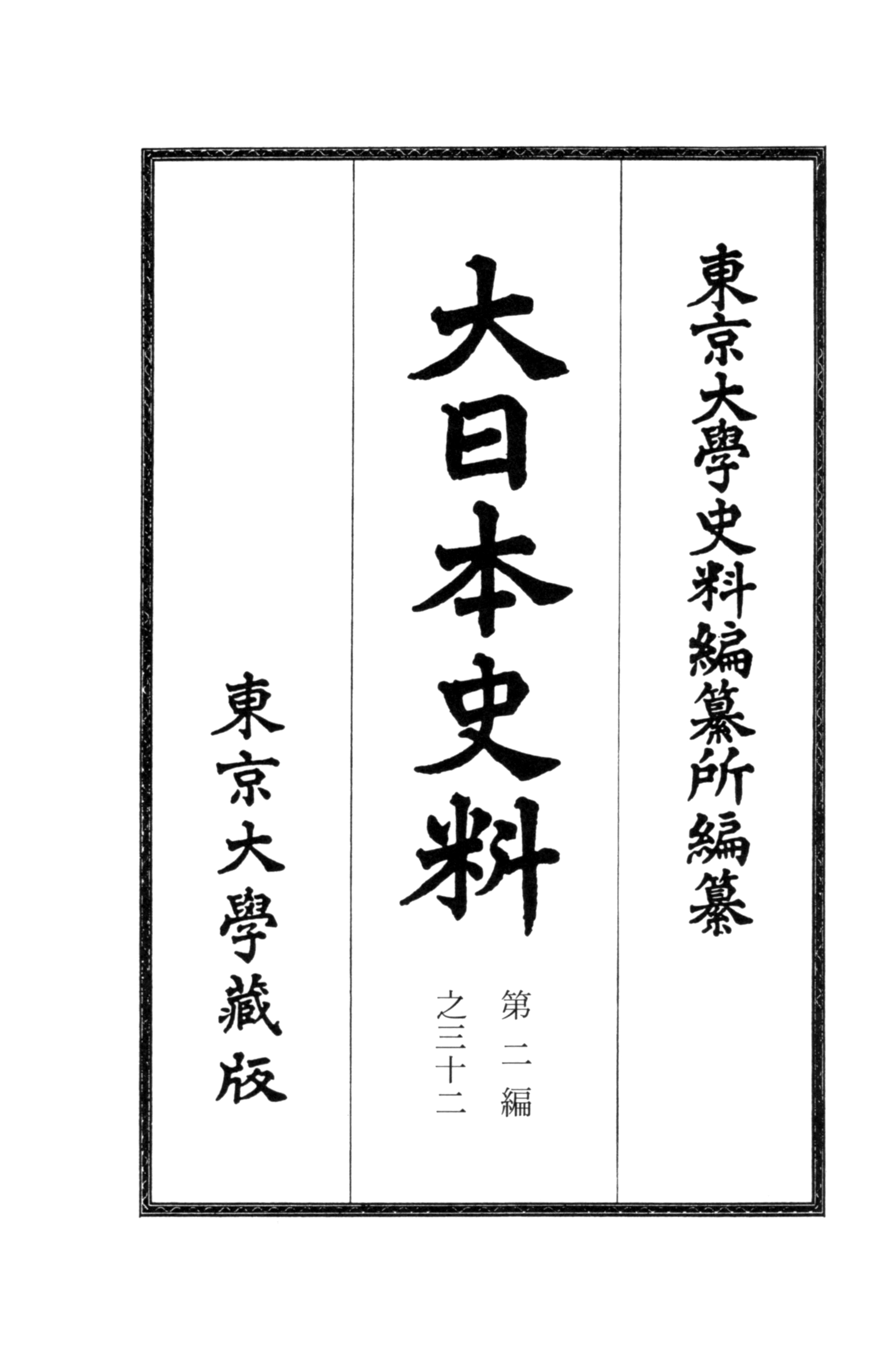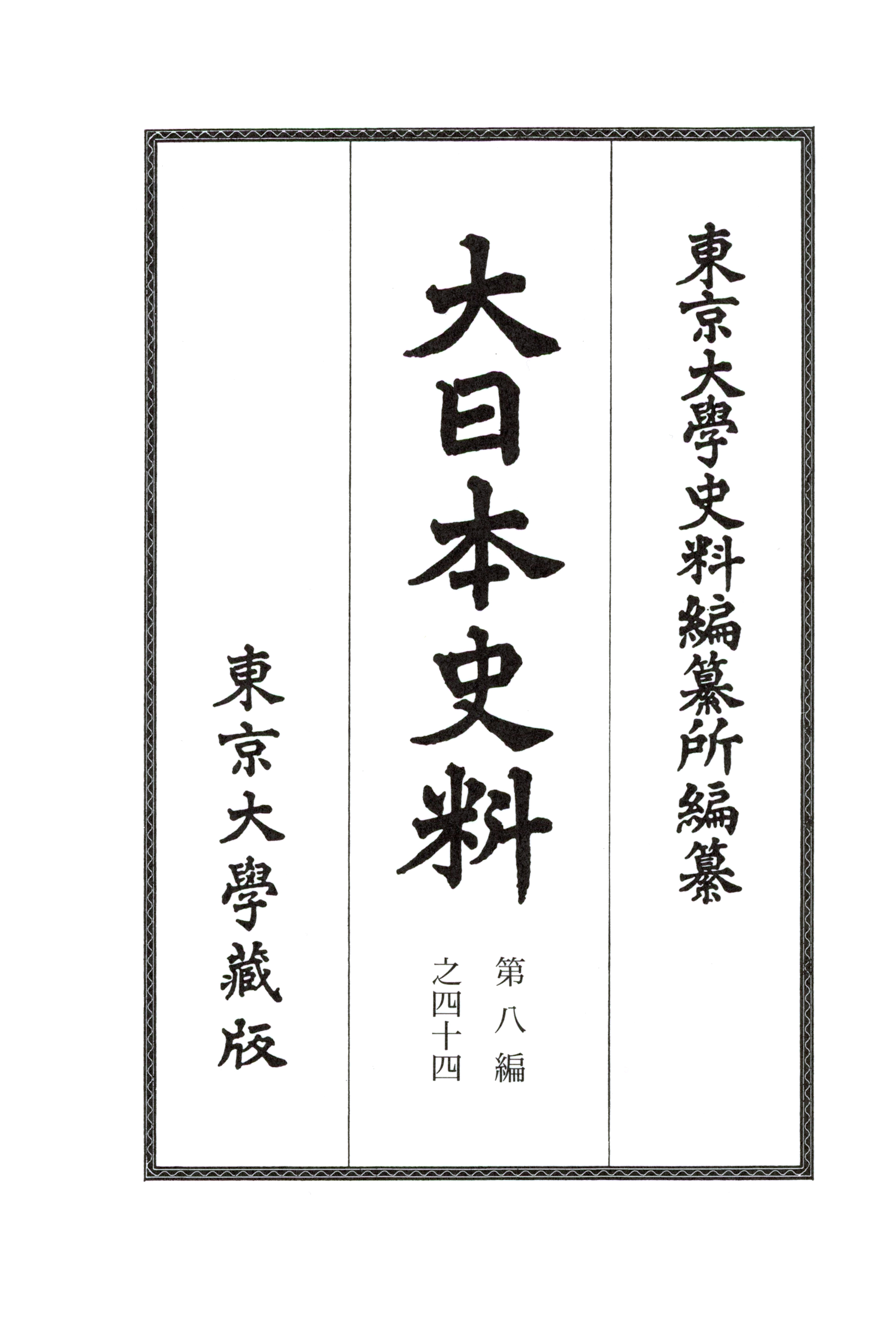
Title
Dai-Nihon Siryo: Dai 8 no 44 (Chronological Source Books of Japanese History: Part 8, Volume 44)
Size
342 pages, A5 format
Language
Japanese
Released
May 09, 2022
ISBN
978-4-13-090394-3
Published by
University of Tokyo Press
Book Info
See Book Availability at Library
Japanese Page
Chronological Source Books of Japanese History is one of the collections of source materials on Japanese history being compiled and published by the Historiographical Institute at the University of Tokyo, and 424 volumes of this series have already been published. For further information on the series as a whole, reference can be made to summaries of other volumes on this website. Part 8 covers the forty years after 1467, when the Ōnin War broke out, and currently we are compiling source materials for the year 1490. This was the year when Ashikaga Yoshimasa, the eighth shogun, died and divisions within the Muromachi shogunate during the Sengoku period began to become normalized.
Volume 44, which has just been published, is the fourth volume of “Year-end Miscellaneous Materials” for 1490 and covers the topics “Imperial Household,” “Shogunate,” “Noble Families,” and “Death and Illness.” The basic format of Chronological Source Books of Japanese History is such that outlines of individual events are given in chronological order, and these are followed by the relevant sources, but sources that are unsuitable for including as events are classified and placed at the end of each year. These are called “Year-end Miscellaneous Materials,” and the present volume contains those classified under four headings starting with “Imperial Household.” “Imperial Household” covers matters relating to the emperor and imperial family and, as in the case of “Shogunate,” most of the relevant source materials have been given under specific events, which means that there are not many materials included in this section. The greater part of this volume is taken up with “Noble Families,” concerning the everyday lives and so on of the nobility, and “Death and Illness,” dealing with the deaths and illnesses of various people.
There have survived many diaries from the last quarter of the fifteenth century written by members of the nobility and monks, and they represent the greatest number of diaries for any period prior to the Edo period. Also important alongside these diaries are texts written on the reverse sides of documents. In an age when paper was valuable, it was common practice when writing a diary or copying a book for personal use to turn a sheet of used paper over and write on the reverse side. Instead of discarding letters that had served their purpose, documents that were no longer needed, or sheets of paper ruined by writing mistakes, their reverse sides would be reused. For this reason, a considerable number of documents have been preserved on the reverse sides of diaries and books. These reverse-side documents had already been disposed of, as it were, and unlike diaries intended to be left for descendants and documents necessary for preserving rights and interests, responses to everyday matters can often be found in such documents.
Kanroji Chikanaga, a mid-ranking noble who wrote a diary called the Chikanaga kyōki, copied a book called the Kugyō bunin in 1491. This was a personnel directory that recorded by year the appointments and dismissals of high-ranking court officials, and Chikanaga wanted to have at hand the records for the past several hundred years in order to check precedents. The letters that have been preserved on the reverse sides of the pages of this work are not dated, but through comparison with other sources there are many that can be confirmed to have been written in the previous year, i.e., 1490. I would draw attention to one letter in particular, written by Ichi Yasuhira on the fifth day of the sixth month (see p. 226).
This letter informs Chikanaga that Yasuhira’s father Tsuguhira had died on the afternoon of that day. Tsuguhira had been the chief priest at Kamigamo Shrine in Kyoto, and Chikanaga, who was the court official responsible for this shrine, needed to be informed of his death. On the following day the court appointed someone else as chief priest, and a document corresponding to the writ of appointment is included in the appendix to the Chikanaga kyōki. This appendix brings together duplicates of documents that Chikanaga issued in his capacity as the official responsible for Kamo Shrine. However, the fact that Tsuguhira died on the fifth day of the sixth month is mentioned in neither the Chikanaga kyōki nor its appendix, and it is known only through this letter. In other words, by making use of reverse-side documents it becomes possible to examine both a diary and the letters in the possession of the diarist, and it becomes clear what he chose to record and chose not to record in his diary.
Chronological Source Books of Japanese History provides a comprehensive corpus of diverse source materials, which can be utilized in many different ways, and by using various materials together one can gain leads for using individual sources more effectively. Of course, there are also probably ways of utilizing the materials that have not occurred to the editors. I encourage you to take a look at a volume in this series if you have the opportunity.
(Written by SUEGARA Yutaka, Professor, Historiographical Institute / 2023)



 Find a book
Find a book


